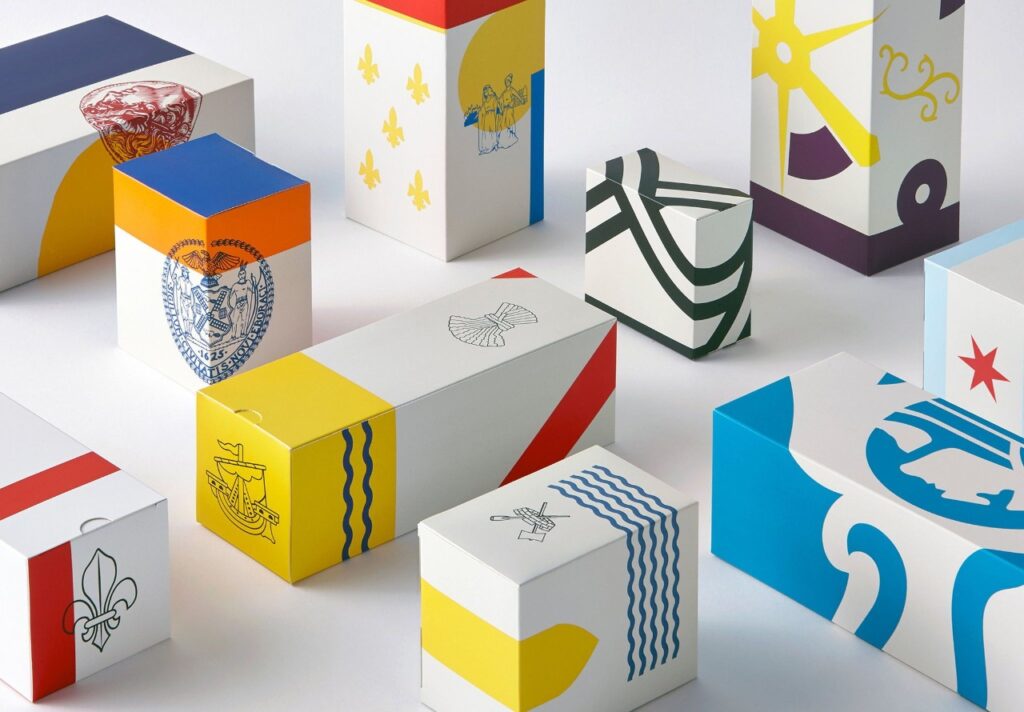
HOW TO DESIGN PRODUCT PACKAGING?
Product packaging is a crucial step in the manufacturing and purchasing of any product. Even though product packaging does not get its share of importance it is still as crucial as the product inside. Not only does packaging save the product from any damage but also adds a dash of chic to the overall appeal of the product. So let us start with the basics,

What do we mean by product packaging?
As the name suggests product packaging refers to creating an exterior holding for the product. The packaging comprises different kinds of material, graphics, color schemes, written content, etc. It is rightly believed that we buy the packing before buying the actual product. It is the product packing that first appeals to the customer and resonates with them. Just like the product the packing must also exude a similar vibe and captivate the buyers through the sight, touch, and feel of the packing.
Pre-Designing points
When it comes to crafting a unique packing for a product one must always take time and creatively prepare for it instead of jumping right at it. Before you start designing the packing here is what you should keep in mind,
- Product details
- Target customer base
- Mode of purchase

Product details
The first step in creating product packing is studying the product thoroughly. What is the product? What are its dimensions? Is it fragile? Keeping these things in mind will help you create a more efficient and long-lasting packing.
Different kinds of products require different types of packing. Products with unusual dimensions will require special boxes to be made, fragile products require more secure packing. Therefore, studying the details is essential.
Target Customer Base
The next step is narrowing down on the target customer group. Is the product gender-specific or unisexual? Is it made for adults, teenagers, or kids? What is the price range?
Gender-specific products require the packing to be gender-specific as well. For example, the product packing designed for a women’s product will have more intricacy and color whereas the product packing designed for a men’s product will be comparatively plain. In the same way, the product packing made for a kids product will be more eye-catchy and aesthetically appealing than then product packing for a product for adults. Keeping the price range in mind is also necessary because if your target customer base comprises of heavy spenders then the packing must also be luxurious.

Mode of Purchase
The location of purchase makes a huge difference in the way a product should be packaged. If you’re selling the product online and shipping it to your customers then the packing must be sturdy and precisely fit the product to avoid any stumbling during the transportation. If your product is available in stores then the packaging must be unique to stand out from the rest of the products and hold the attention of the customers.
Aesthetic Details
The next step is to make the packaging aesthetically appealing by choosing the right colors, fonts, and graphics to go on the box. Choose your patent brand colors to maintain harmony between the product and the brand. Another decision to make is whether or not you want to place your logo, not on the packaging.
Content
The content on your product packaging will add to its uniqueness. This can include the product’s name along with a tiny description, images, barcode, and other product specifications.
Define your choice
Whenever it comes to designing anything it is always best to start the process with a mood board. Put together different styles of packaging that you like and narrow down on the elements that you want to incorporate. Take inspiration from your surroundings and combine everything on a moo board. This will help you draw clarity on the concept you wish to move forward with.
Budget
Product packaging cost can be divided into 2 types:
- One-time costs
- Per item costs
The former refers to the static costs of packaging such as setting up a printer, creating a box dye, creating the design. You pay for these only once unless you wish to change them after some time.
The latter refers to the cost of material and labor that will go into the development of the packaging. These processes along with the cost of other miscellaneous items used in the packaging such as tissue paper and tape will require investment after short periods.
Design Details
Once you have gathered all the information about the aesthetics of the packaging it is time to bring it to life by designing the packaging.
- Packaging Layers
The packaging includes “3 layers” and depending on the product you can choose if the products 1,2 or all the 3 layers. The outermost layer is the box the product comes in, the middle layer is the stuffing (if required) of tissue paper that prevents the product from moving/stumbling inside the box, and the innermost layer covering of the product such as a candy wrapper.
- Types of packaging
Bearing in mind your product and its competitors you must choose between the different kinds of packaging’s available in the market. You can choose between a box, bottle, cans, sachet, etc.
- Content
The content that goes on the packaging must be crisp and catchy to grab the attention of the customers. So it is suggested to opt for a unique name and a memorable tagline.
- Feedback
Once you have the final design in hand make sure to take feedback from the people around you and analyse the packaging from the customer’s point of view. This will help you decide if the packaging needs any changes or not.
These were a few tips and tricks to help nail that design to the T!
Creative Thinks Media is a design haven with a team of experts who offer nothing but the best. Our in-house designers are known for crafting product-specific designs following the likes and dislikes of our clients to bring to life the concepts they only imagined.

Log onto www.creativethinksmedia.com and start your journey with us today!

